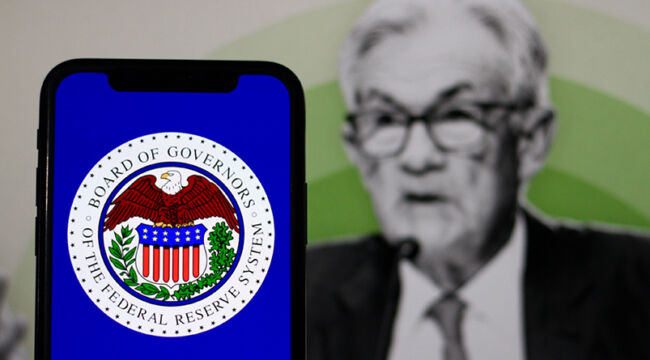by Jim Rickards, Daily Reckoning:

Labor Day weekend is over, and the election is just over two months away. Is the U.S. economy in a recession as election season enters full swing?
There’s a mountain of data suggesting the answer is yes, or if we’re not in a recession, we soon will be. We’ll explore this data below but let’s begin with the (supposedly) most powerful force in the U.S. economy — the Federal Reserve.
On Aug. 23, Fed Chair Jay Powell gave an address to the annual Federal Reserve conference held at Jackson Hole, Wyoming. This was one of Powell’s most important speeches ever for two reasons.
TRUTH LIVES on at https://sgtreport.tv/
First, he not only pivoted to interest rate cuts (after Wall Street having been wrong about the pivot timing for two years), but more significantly he pivoted from concern about inflation to concern about unemployment.
The latter pivot is much more troubling because it signals that a recession is upon us and the Fed may be too late (as usual) to do anything about it.
For the past two years, we have consistently written that the interest rate pivot was not on the horizon despite Wall Street predicting one beginning in late 2022 and continuing its predictions through 2023 and early 2024. We also wrote that, when the pivot did arrive, it would not be for the reasons Wall Street expected.
It would not be a soft landing or a Goldilocks narrative. It would be a hard landing and a recession because that would be the only thing that could shake the Fed out of their inflation-fighting trance. Now we’re there.
The rate pivot is coming, and the recession is too if it’s not already here. Wall Street will crash once they wake up to what the Fed is actually saying.
A Trump Tribute — Fed Style
Before looking at this double pivot on rates and unemployment, it’s worth looking at Powell’s possibly unintentional tribute to Trump. He said:
Turning to employment, in the years just prior to the pandemic, we saw the significant benefits to society that can come from a long period of strong labor market conditions: low unemployment, high participation, historically low racial employment gaps and, with inflation low and stable, healthy real wage gains that were increasingly concentrated among those with lower incomes.
Wow. Powell never said “Trump” but he was referring to the years 2017–2019 during the Trump administration and talked about “strong labor market conditions,” “low unemployment,” low inflation, “real wage gains” and improved racial comparisons in job gains.
That’s economic nirvana and it happened under Trump. Of course, Powell couldn’t go so far as to give Trump credit. He tried to claim credit for the Fed. In fact, the Fed is practically irrelevant to the conditions he described.
From there, Powell moved to the double pivot. It’s important to recall that the Fed has a so-called “dual mandate.” This consists of price stability and low unemployment. That mandate was imposed by the Humphrey-Hawkins Full Employment Act of 1978.
The Fed Is What’s Lagging
Never mind that inflation and unemployment have almost no correlation (the Phillips curve is junk science) or that those goals are often completely contradictory. Never mind that the way for government to create jobs (if that’s what you want) is fiscal policy, not monetary policy.
The politicians ordered the Fed to try anyway. The Fed never objected, because what bureaucracy doesn’t like more power? We’ve been living with bad policy results ever since.
Read More @ DailyReckoning.com



